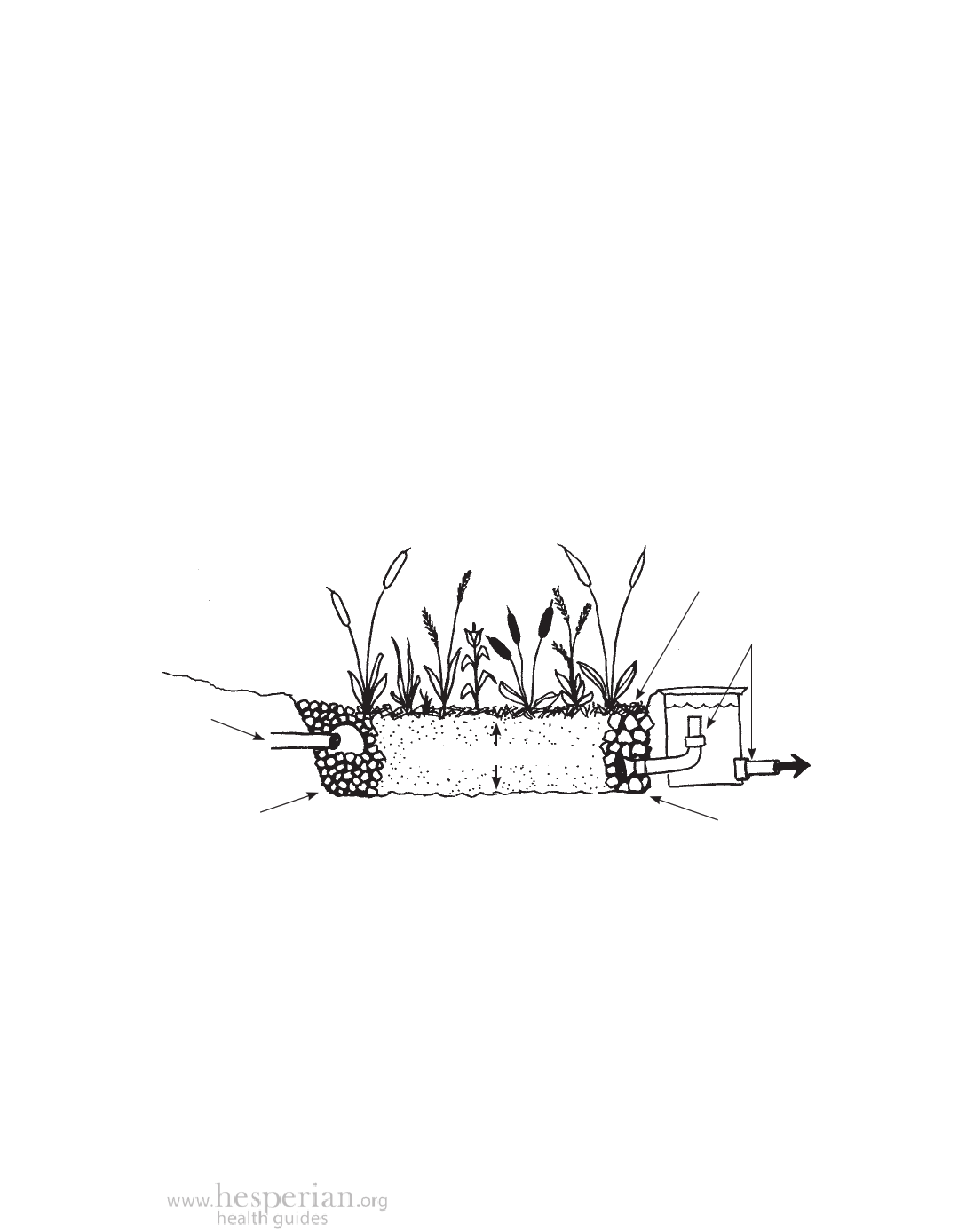
Wastewater: A Problem or a Resource? 101
To make a constructed wetland
In planning a constructed wetland, consider these issues:
• How much area do you need and how deep does it need to be? The more
water that flows through the system, the bigger and deeper it needs to
be to safely filter greywater. If water flows too quickly, the reed bed
cannot clean it well.
• Is the water source higher than the wetland? Water must flow through
the wetland, so it needs to come from a source above, or be pumped.
• Where will cleaned water flow to? Can it be collected in a storage tank
or directed to a garden?
Wetlands can be built anywhere there is enough space. If there is little space,
they can be built above ground in basins, such as a 200 liter drum. In areas
with well-drained soil or high groundwater, dig a pit and line it with thick
plastic or cement. In areas with clay soil, no lining is needed.
To maintain a constructed wetland
Locally available wetland plants
7 to 8 cm of mulch on
top to prevent odors and
mosquito breeding
Inlet pipe
(greywater
from house)
Pit 30 to 70 cm deep
Outlet pipes (4 to
5 cm around), no
more than 15 cm
below the inlet pipe
Small stones (2 to
4 cm around) at
inlet pipe
Coarse sand and small gravel (no more
than 2 cm around) in the wetland bed
Large stones (4 to 5 cm
around) at outlet
A constructed wetland dug into the ground can treat large amounts of greywater.
Every constructed wetland has different needs depending on the amount of
water, the type of soil and plants, and other conditions. Experiment to find the
best way to make your constructed wetland work.
• If plants dry out or die, not enough water is running through. More water
sources can be added to the system, the pit can be made smaller or less
deep, or new plants can be added.
• If water does not flow through, try bigger stones and less sand, or lower
the outlet pipe.
A Community Guide to Environmental Health 2012